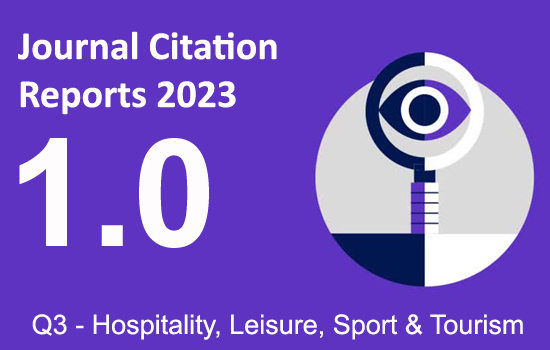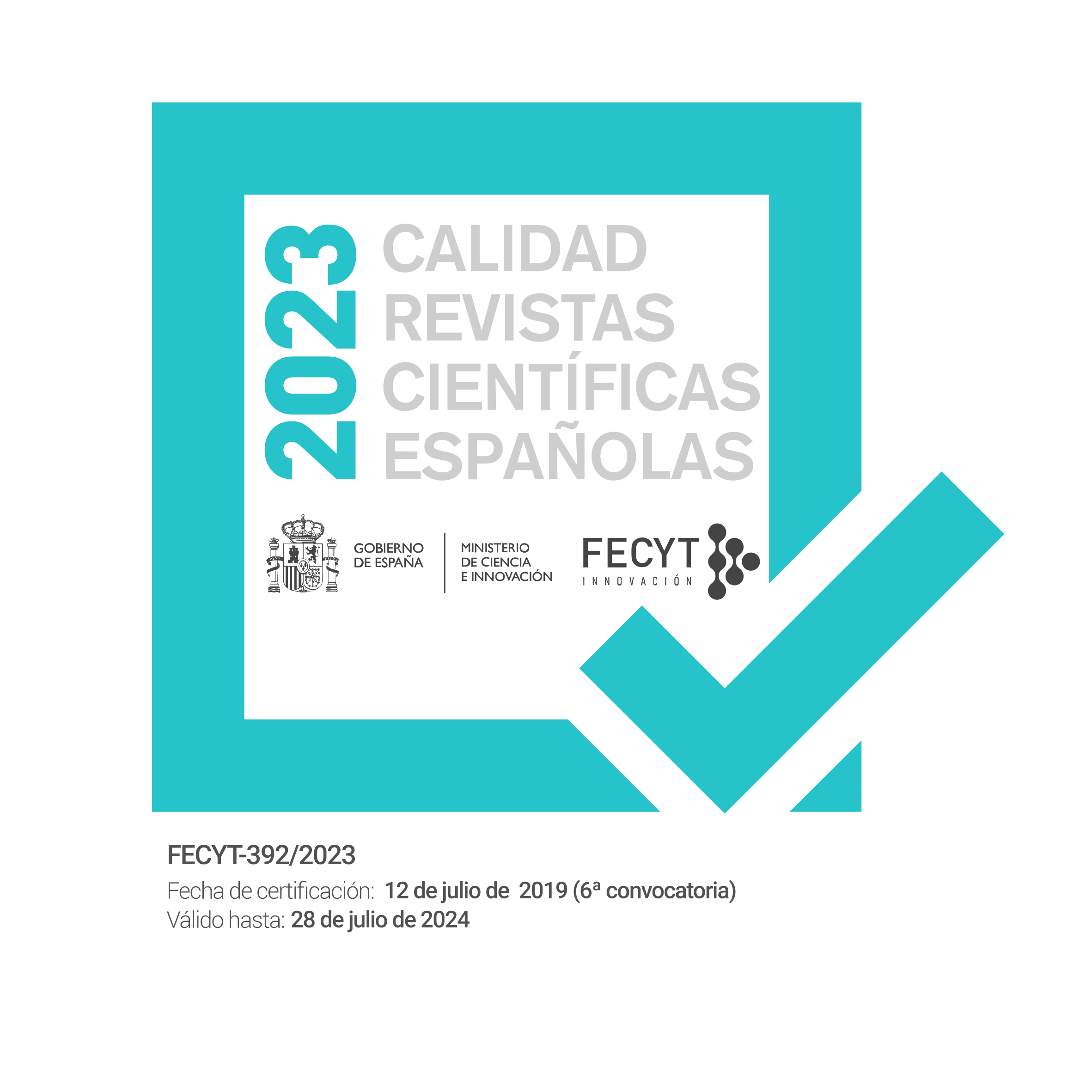Efectos de la competición de kata simulada en el rendimiento en test de potencia de la parte superior e inferior del cuerpo
DOI:
https://doi.org/10.18002/rama.v16i2.6389Palabras clave:
Deportes de combate, artes marciales, Karate, potencia muscular, salto con contramovimiento, lanzamiento de balón medicinalAgencias Financiadoras:
The author Emerson Franchini is supported by CNPQ grant 301003/2019-0Resumen
Treinta atletas masculinos que representan los estilos de karate Shotokan (n = 10), Gojuryu (n = 10), y Shitoryu (n = 10), fueron reclutados para verificar las respuestas neuromusculares durante una competencia simulada que consta de cinco kata múltiples. Realizaron las pruebas de rendimiento test de lanzamiento de balón medicinal y test de salto con contramovimiento em condiciones de control y kata. Para el desempeño de los miembros superiores, hubo un efecto momentáneo (F9.486 = 3.55, P ˂ 0001, ηp2 = 0.062, media) con valores más altos pre 1 en comparación con pre 5 (p ˂ 0.001; d = 0, 31, pequeño). En cuanto al desempeño de miembros inferiores, hubo efecto de interacción entre momento y condición, con valores más altos pre kata 1 en relación a pre kata 3 (p = 0,002; d = 0,34, pequeño) y pre kata 5 (p ˂ 0,001; d = 0,41, pequeño). Por otro lado, valores más altos después de kata 5 en comparación con pre kata 5 (p ˂ 0,001; d = 0,31, pequeño). No hubo interacción entre el momento, el estilo y la condición. La competencia de kata simulada no afectó el rendimiento de los miembros superiores, pero los atletas comenzaron el tercer y quinto kata con un rendimiento reducido de los miembros inferiores. Por el contrario, hubo una mejora en el rendimiento después del kata 5 en comparación con el pre kata 5 en relación con las extremidades inferiores. Estos resultados proporcionan información importante sobre la categoría y cómo se ven afectados los atletas durante una competición simulada.
Descargas
Métricas alternativas
Citas
Arriaza R. Karate. In Kordi, R., Maffulli, N., Wroble, R. R., & Wallace, W. A. (Eds.). (2009). Combat sports medicine (287-297). London: Springer Science & Business Media.
Andreato, L. V., Julio, U. F., Panissa, V. L. G., Esteves, J. V. D. C., Hardt, F., de Moraes, S. M. F., ... & Franchini, E. (2015). Brazilian jiu-jitsu simulated competition part II: Physical performance, time-motion, technical-tactical analysis, and perceptual responses. The Journal of Strength & Conditioning Research, 29(7), 2015-2025. doi: https://doi.org/10.1519/jsc.0000000000000819
Augustovicova, D., Stefanovsky, M., Argajova, J., & Kampmiller, T. (2019). The issue of early specialization in karate: the same pool of katas in all top-level WKF competition age categories. Archives of Budo, 15, 241-248.
Barbas, I., Fatouros, I. G., Douroudos, I. I., Chatzinikolaou, A., Michailidis, Y., Draganidis, D., ... & Katrabasas, I. (2011). Physiological and performance adaptations of elite Greco-Roman wrestlers during a one-day tournament. European Journal of Applied Physiology, 111(7), 1421-1436. doi: https://doi.org/10.1007/s00421-010-1761-7
Bishop, D. (2003a). Warm up I. Sports Medicine, 33(6), 439-454.doi : https://doi.org/10.2165/00007256-200333060-00005
Bishop, D. (2003b). Warm up II. Sports Medicine, 33(7), 483-498. doi: https://doi.org/10.2165/00007256-200333070-00002
Bonitch-Góngora, J. G., Bonitch-Domínguez, J. G., Padial, P., & Feriche, B. (2012). The effect of lactate concentration on the handgrip strength during judo bouts. The Journal of Strength & Conditioning Research, 26(7), 1863-1871. doi: https://doi.org/10.1519/JSC.0b013e318238ebac
Bussweiler, J., & Hartmann, U. (2012). Energetics of basic karate kata. European Journal of Applied Physiology, 112(12), 3991-3996. doi: https://doi.org/10.1007/s00421-012-2383-z
Chaabène, H., Hachana, Y., Franchini, E., Mkaouer, B., & Chamari, K. (2012). Physical and physiological profile of elite karate athletes. Sports Medicine, 42(10), 829-843. doi: https://doi.org/10.2165/11633050-000000000-00000
Chaabène, H., Franchini, E., Sterkowicz, S., Tabben, M., Hachana, Y., & Chamari, K. (2015). Physiological responses to karate specific activities. Science & Sports, 30(4), 179-187. doi: https://doi.org/10.1016/j.scispo.2015.03.002
Chiodo, S., Tessitore, A., Cortis, C., Lupo, C., Ammendolia, A., Iona, T., & Capranica, L. (2011). Effects of official Taekwondo competitions on all-out performances of elite athletes. The Journal of Strength & Conditioning Research, 25(2), 334-339. doi: https://doi.org/10.1519/JSC.0b013e3182027288
Cimadoro, G., Mahaffey, R., & Babault, N. (2018). Acute neuromuscular responses to short and long roundhouse kick striking paces in professional Muay Thai fighters. Journal of Sports Medicine and Physical Fitness, 59(2), 204-209. doi: https://doi.org/10.23736/S0022-4707.18.08295-6
Cohen, J. (1969). Statistical power analysis for the behavioral sciences. New York: Academic press.
Cramer, M. I. (2018). The History of Karate and the Masters who Made it: Development, Lineages, and Philosophies of Traditional Okinawan and Japanese Karate-do. Blue Snake Books.
Detanico, D., Librizzi, N. V., & Athayde, M. S. D. S. (2016). Effects of a Songahm taekwondo tournament on vertical jump and technical-tactical performance in athletes of the Brazilian national team. Human Movement, 17(3), 162-167. doi: https://doi.org/10.1515/humo-2016-0020
Doria, C., Veicsteinas, A., Limonta, E., Maggioni, M. A., Aschieri, P., Eusebi, F., ... & Pietrangelo, T. (2009). Energetics of karate (kata and kumite techniques) in top-level athletes. European Journal of Applied Physiology, 107(5), 603. doi: https://doi.org/10.1007/s00421-009-1154-y
Francescato, M. P., Talon, T., & Di Prampero, P. E. (1995). Energy cost and energy sources in karate. European journal of applied physiology and occupational physiology, 71(4), 355-361. doi: https://doi.org/10.1007/BF00240417
Hopkins, W. G. (2002). A scale of magnitudes for effect statistics. A new view of statistics. Retrieved 2019 from http://sportsci.org/resource/stats/effectmag.html
Invernizzi, P. L., Longo S., & Scurati R. (2008). Analysis of heart rate and lactate concentrations during coordinative tasks: pilot study in karate kata world champions. Sport Sciences for Health, 3, 41-46.doi: https://doi.org/10.1007/s11332-008-0053-7
Johnson, B. L., & Nelson, J. K. (1969). Practical measurements for evaluation in physical education. Minneapolis: Burgess.
Julio, U. F., Gonçalves Panissa, V. L., Agostinho, M. F., Cury, R. L., Esteves, J. V., & Franchini, E. (2018). Time-course of time-motion, physiological, perceived exertion and neuromuscular responses during simulated judo matches. International Journal of Performance Analysis in Sport, 18(4), 582-594. doi: https://doi.org/10.1080/24748668.2018.1507479
Komi, P. V. & Bosco, C. (1978). Utilization of stored elastic energy in leg extensor muscles by men and women. Medicine and Science in Sports, 10, 261-265.
Kraemer, W. J., Fry, A. C., Rubin, M. R., Triplett-McBride, T., Gordon, S. E., Koziris, L. P., ... & Fleck, S. J. (2001). Physiological and performance responses to tournament wrestling. Medicine and Science in Sports and Exercise, 33(8), 1367-1378. doi: https://doi.org/10.1097/00005768-200108000-00019
Loturco, I., Artioli, G. G., Kobal, R., Gil, S., & Franchini, E. (2014). Predicting punching acceleration from selected strength and power variables in elite karate athletes: a multiple regression analysis. The Journal of Strength & Conditioning Research, 28(7), 1826-1832. doi: https://doi.org/10.1519/JSC.0000000000000329
Loturco, I., Nakamura, F. Y., Lopes-Silva, J. P., Silva-Santos, J. F., Pereira, L. A., & Franchini, E. (2017). Physical and physiological traits of a double world karate champion and responses to a simulated kumite bout: A case study. International Journal of Sports Science & Coaching, 12(1), 138-147. doi: https://doi.org/10.1177/1747954116684395
Penov, R., Petrov, P., & Kolimechkov, S. (2020). Changes in heart rate and blood lactate concentration during karate kata competition. Pedagogy of Physical Culture and Sports, 24(3), 137-142. doi: https://doi.org/10.15561/26649837.2020.0306
Racinais, S., Cocking, S., & Périard, J. D. (2017). Sports and environmental temperature: from warming-up to heating-up. Temperature, 4(3), 227-257. doi: https://doi.org/10.1080/23328940.2017.1356427
Tillin, N. A., & Bishop, D. (2009). Factors modulating post-activation potentiation and its effect on performance of subsequent explosive activities. Sports Medicine, 39(2), 147-166. doi: https://doi.org/10.2165/00007256-200939020-00004
Tsurubami, R., Oba, K., Samukawa, M., Takizawa, K., Chiba, I., Yamanaka, M., & Tohyama, H. (2020). Warm-up intensity and time course effects on jump performance. Journal of Sports Science & Medicine, 19(4), 714-720.
Tucker, R., & Noakes, T. D. (2009). The physiological regulation of pacing strategy during exercise: a critical review. British Journal of Sports Medicine, 43(6), e1. doi: https://doi.org/10.1136/bjsm.2009.057562
Vujkov, B., Calleja-Gonzalez, J., Krneta, Ž., Drid, P., & Ostojić, S. (2015). Physiological responses the organism of karate athletes specialists of kata and kumite during simulated competition. Archives of Budo, 11, 365-370.
World Karate Federation (2020). Sports-rules and regulations. Retrieved August 1, 2020 from https://www.wkf.net/pdf/WKF_Competition%20Rules_2020_EN.pdf
Descargas
Publicado
Cómo citar
Número
Sección
Licencia
Derechos de autor 2021 Cintia Elaine Lassalvia, Ursula Ferreira Julio, Emerson Franchini

Esta obra está bajo una licencia internacional Creative Commons Atribución-NoComercial-CompartirIgual 4.0.
Los autores que publican en esta revista están de acuerdo con los siguientes términos:
- Los autores ceden de forma no exclusiva los derechos de explotación (reproducción, distribución, comunicación pública, transformación) a la Universidad de León, por lo que pueden establecer, por separado, acuerdos adicionales para la distribución no exclusiva de la versión de la obra publicada en la revista (por ejemplo, alojarlo en un repositorio institucional o publicarlo en un libro), con un reconocimiento de su publicación inicial en esta revista.
- Este trabajo se encuentra bajo la Creative Commons Attribution-NonCommercial-ShareAlike 4.0 International License. Puede consultarse desde aquí la versión informativa y el texto legal de la licencia.
- Se permite y se anima a los autores a difundir electrónicamente las versiones pre-print (versión antes de ser evaluada) y/o post-print (versión evaluada y aceptada para su publicación) de sus obras antes de su publicación, ya que favorece su circulación y difusión más temprana y con ello un posible aumento en su citación y alcance entre la comunidad académica.











